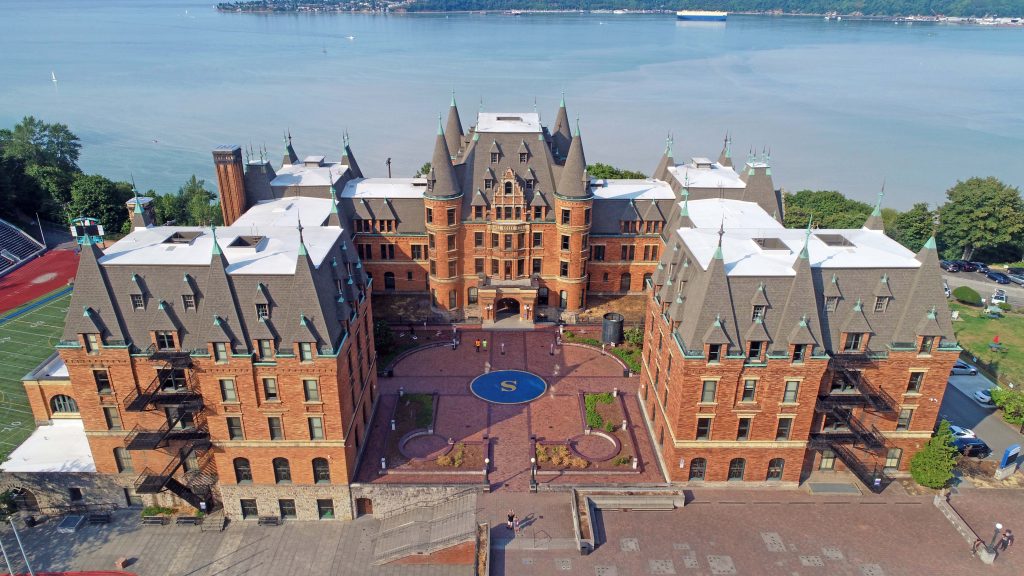
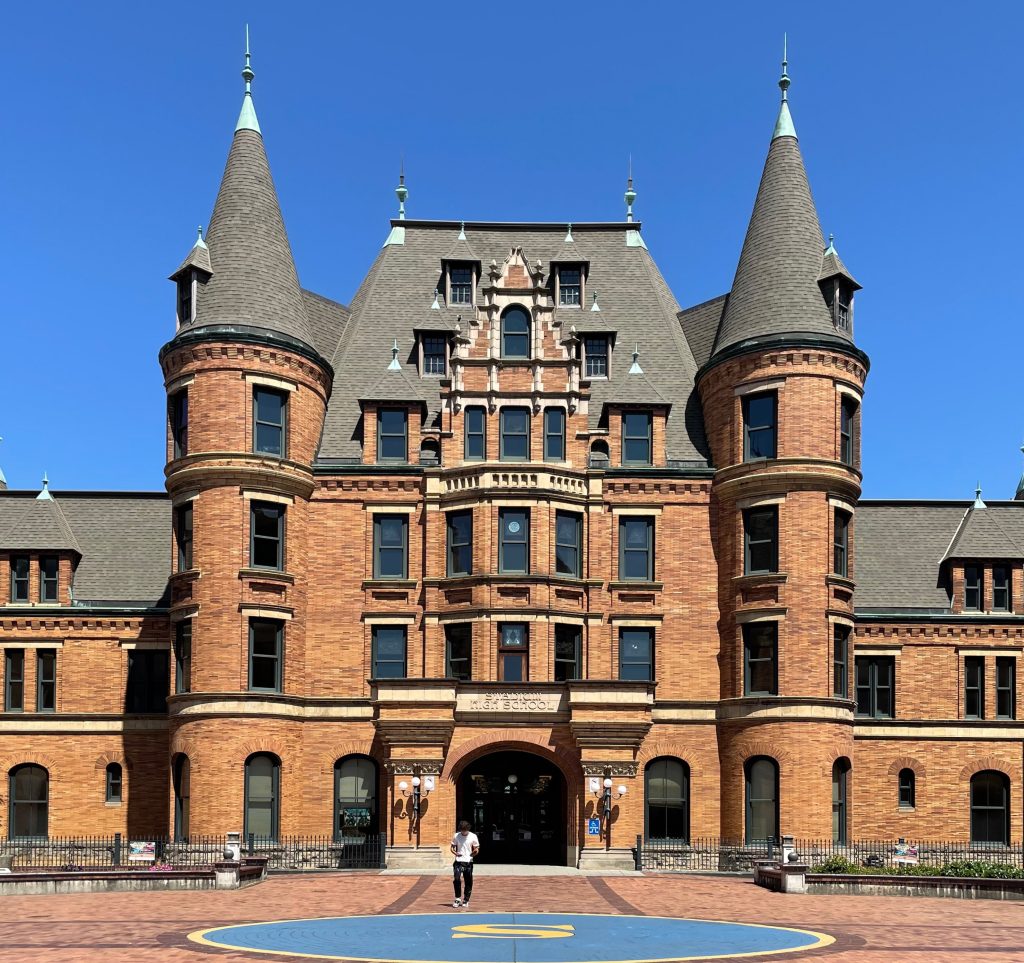
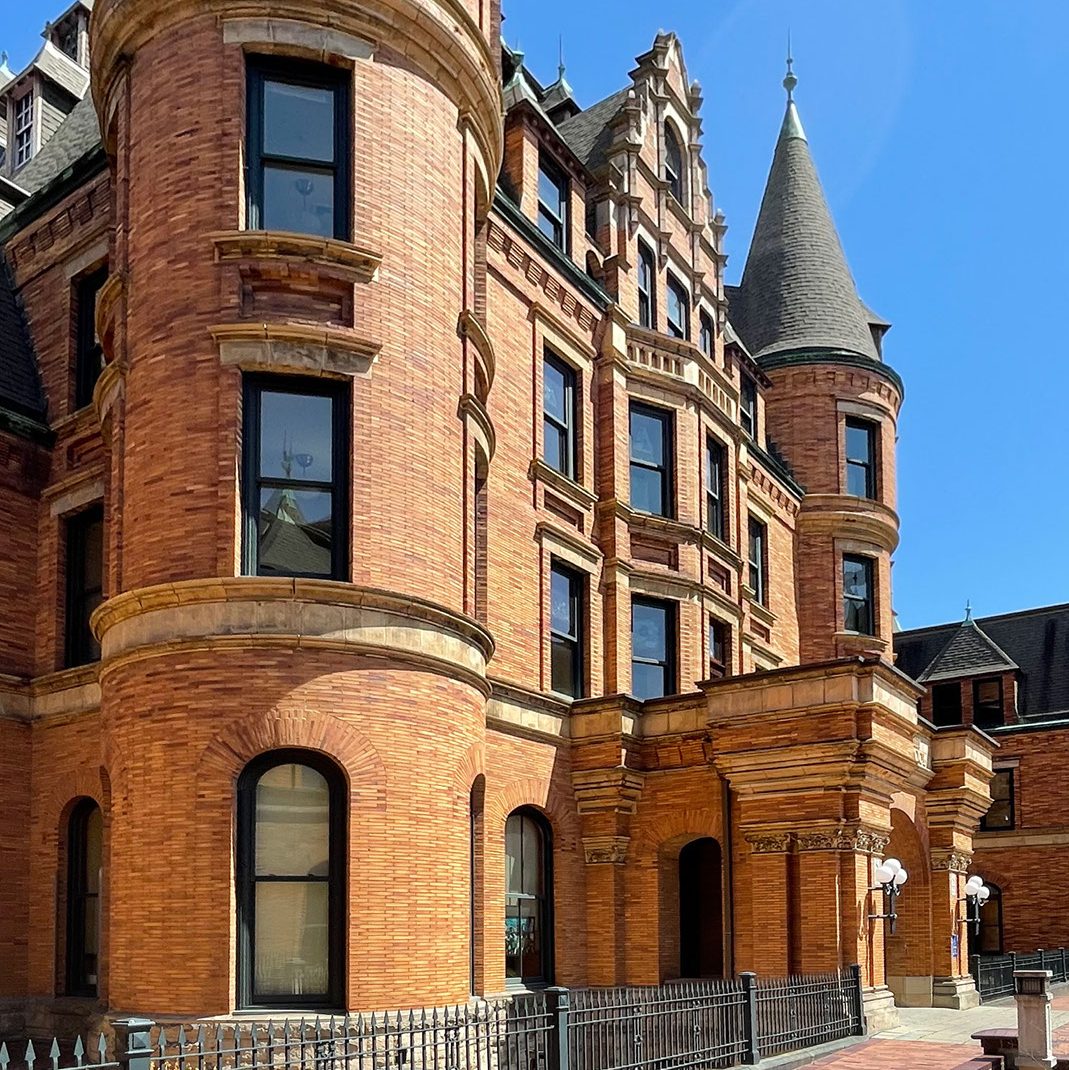
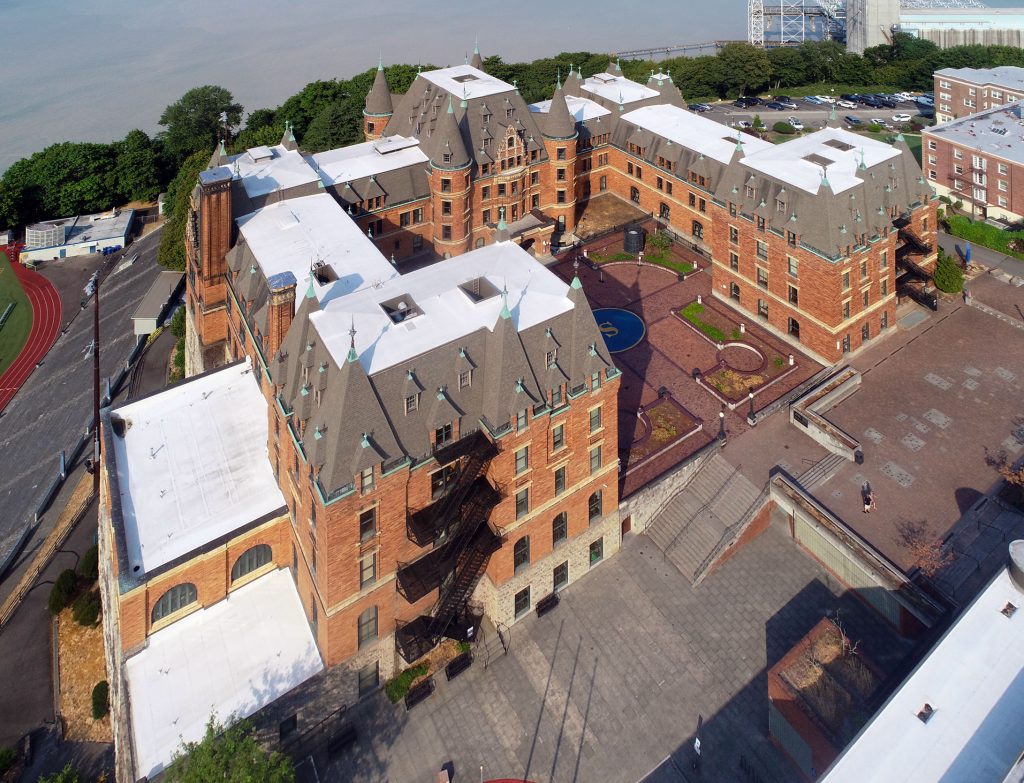
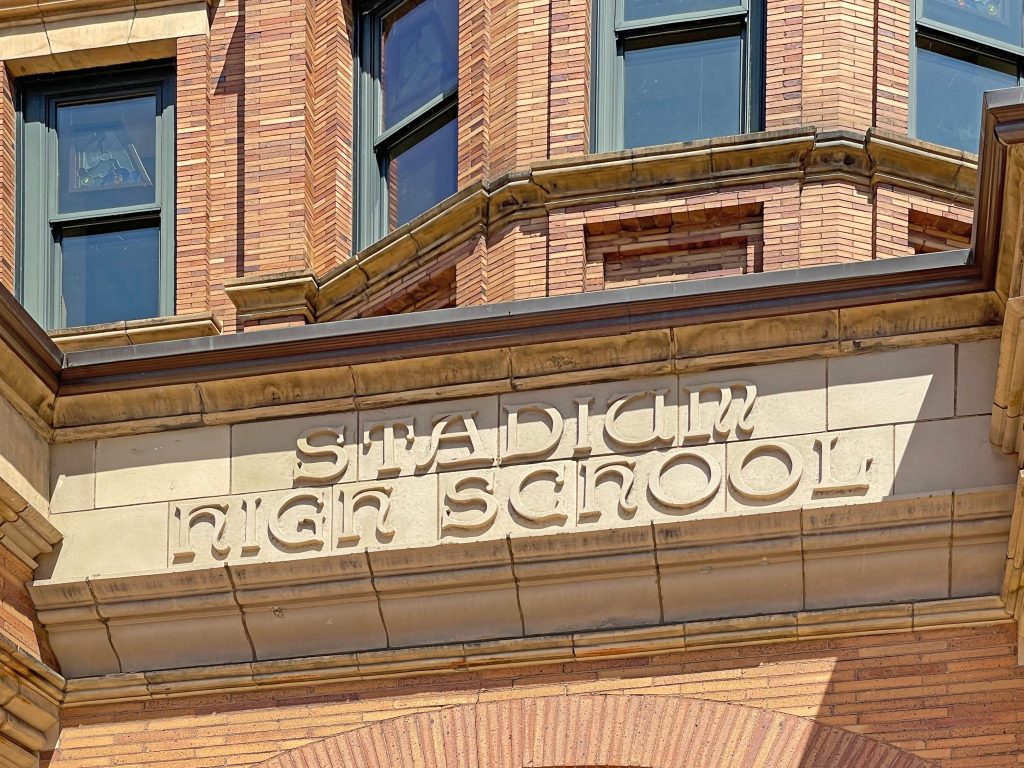
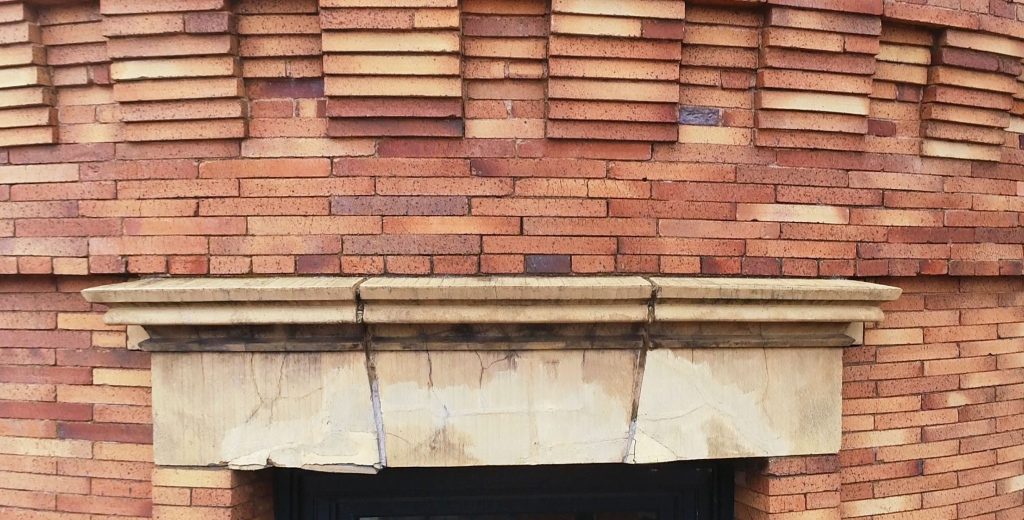
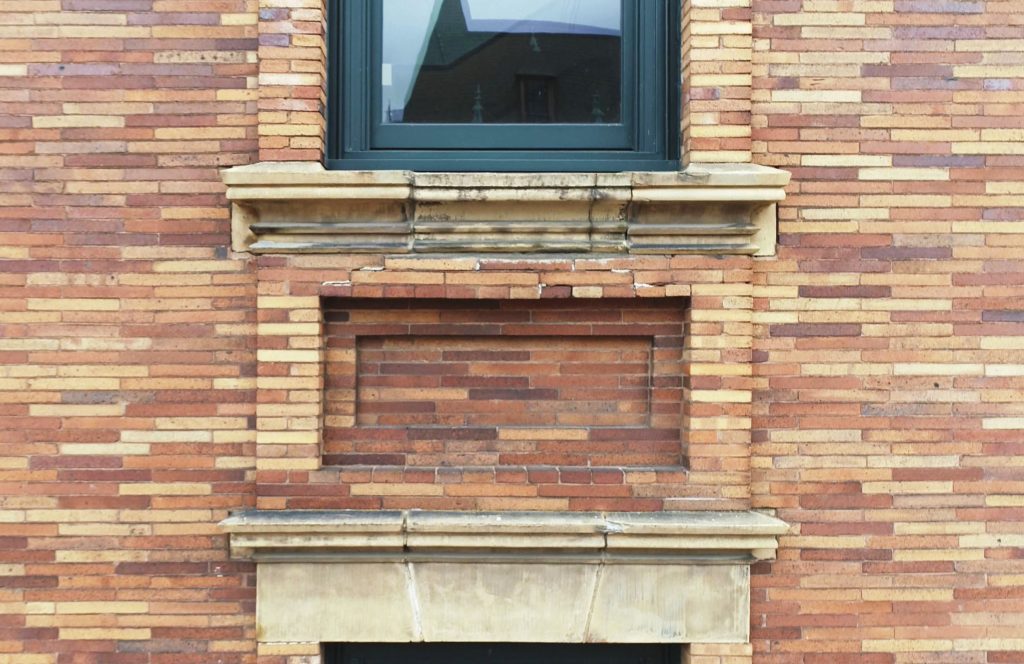
Location: Tacoma, Washington
Size: 136,500 SF
Client: Tacoma Public Schools
Completion Date: Ongoing
Converted from an abandoned and fire-damaged luxury hotel for Northern Pacific Railway to a high school in the early twentieth century, the school is a local, state and national register listed 1891 structure. The design by George W. Hewitt is based on a French Chateau, and long-time Tacoma School District Architect, Frederick Heath, completed the conversion. The historic building materials are a combination of Wilkeson sandstone, roman brick, and terra-cotta masonry with some replacement materials, including copper flashing and finials. Stadium High School has undergone several renovations and additions to the building over the last 130 years, the most recent being an extensive rehabilitation project completed in 2006.
Richaven was contacted by TPS to assess the exterior envelope of the historic Stadium High School building, and to help determine the deterioration mechanisms and appropriate treatment options for the exterior masonry. Utilizing drone technology and observations made from grade, Richaven developed an extensive exterior condition report to document and organize deficiencies by elevation, floor level, and building material. Richaven followed this up with development of template specifications and details for stone, brick, and terra-cotta restoration. In addition, Richaven coordinated material testing and analysis and mock-ups of recommended masonry restoration techniques and masonry cleaning protocols.
Specific technical preservation issues include:
- Restoration of the existing brick exterior walls, including removing inappropriate re-pointing mortar and testing historic brick and mortar for in-kind replacement
- Settlement cracking at window arches, flat terra-cotta headers, and the two historic chimneys
- Exfoliation of Wilkeson sandstone due to incompatible repointing mortar
- Spalling and failure of existing terra-cotta repairs
- Wood window and wood trim weathering and deterioration at the upper attic levels
- Efflorescence due to corroded internal downspouts
- Multiple failures of sealants and sealants installed in inappropriate locations (i.e., at masonry joints)
- Significant soiling and organic growth, including algae and moss, on the brick, stone, and terra-cotta material
- Rising damp visible from within sub-basement
